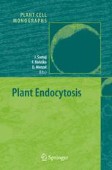Search
Filters applied:
Search Results
-
Cytological, Physiological and Biochemical Aspectsof Somatic Embryo Formation in Flax
The cytological, physiological and some biochemical aspects of somatic embryo formation in flax are discussed. From the review it is obvious that...
-
Methods and Molecular Tools for Studying Endocytosis in Plants---an Overview
Proteins of the endocytosis machinery in plants, such as clathrin and adaptor proteins, were isolated and characterized using combinations of...
-
Storage Proteins and Peroxidase Activity During Zygotic and Somatic Embryogenesis of Firs (Abies sp.)
Somatic embryogenesis was initiated from immature embryos of Abies concolor (Gord. et Glend), A. numidica De Lann. and A. cilicica Carr., A....
-
Genomic and Molecular Analyses of Transporters in the Male Gametophyte
The major events of male reproductive development and function have been known for years, but the molecular and cellular bases of these processes...
-
Tip Growth and Endocytosis in Fungi
Recent advances in molecular cell biology have provided new insights into different cellular processes that all turn out to contribute to...
-
Transcriptome analysis in abiotic stress conditions in higher plants
Drought, high salinity, and low temperature are major environmental factors that limit plant productivity. Plants respond and adapt to these stresses...
-
Signal transduction in plant cold acclimation
Temperate plants respond to low temperature by activating a cold acclimation program leading to enhanced tolerance to freezing temperatures. This...
-
Sensors of abiotic stress in Synechocystis
Systematic mutagenesis of histidine kinases in combination with DNA microarray technology has allowed us to identify sensors for cold, hyperosmotic...
-
Plant responses to heat stress
The heat stress response is characterized by inhibition of normal transcription and translation, higher expression of heat shock proteins (hsps) and...
-
Extremal Properties of Random Structures
The extremal characteristics of random structures, including trees, graphs, and networks, are discussed. A statistical physics approach is employed...
-
On the Analysis of Backtrack Proceduresfor the Colouring of Random Graphs
Backtrack search algorithms are procedures capable of deciding whether a decision problem has a solution or not through a sequence of trials and...
-
Attacks and Cascades in Complex Networks
This paper reviews two problems in the security of complex networks: cascades of overload failures on nodes and range-based attacks on links....
-
Tomography and Stability of Complex Networks
We study the structure of generalized random graphs with a given degree distribution P(k), and review studies on their behavior under both random...
-
Topology, Hierarchy, and Correlations in Internet Graphs
We present a statistical analysis of different metrics characterizing the topological properties of Internet maps, collected at two different...
-
The Small World Phenomenonin Hybrid Power Law Graphs
The small world phenomenon, that consistently occurs in numerous existing networks, refers to two similar but different properties — small average...
-
Abscisic acid signalling
Signalling of abscisic acid (ABA) in plants is characterized by an amazing number of secondary messengers that are part of the pathway or modulate...
-
Plant salt tolerance
Soil salinity adversely affects crop productivity and quality. The success of breeding programs aimed at salinity tolerant crop varieties is limited...
-
Critical Phenomena in a Small World
We consider the behavior of various systems on a small-world network near a critical point. Our starting point is a different, nonrandom system with...
-
Who Is the Best Connected Scientist?A Study of Scientific Coauthorship Networks
Using data from computer databases of scientific papers in physics, biomedical research, and computer science, we have constructed networks of...
-
Scholarly Information Network
I review the background and some recent trends of a particular scholarly information network, ar**v.org, and discuss some of its implications for new...
